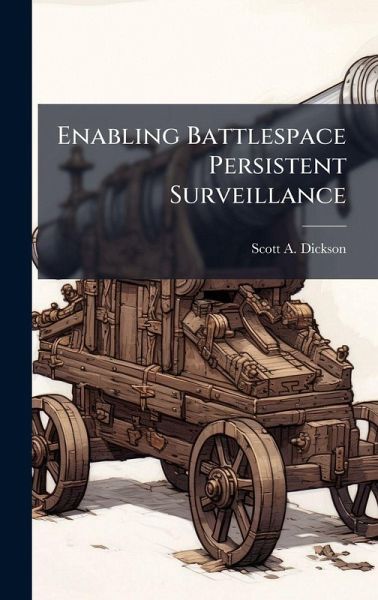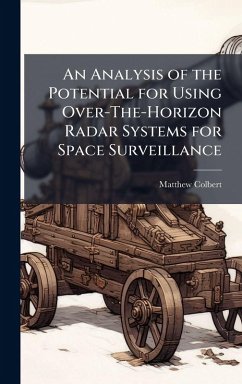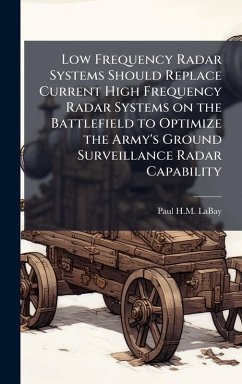
Enabling Battlespace Persistent Surveillance
Versandkostenfrei!
Versandfertig in über 4 Wochen
25,99 €
inkl. MwSt.
Weitere Ausgaben:

PAYBACK Punkte
13 °P sammeln!
In 2025, the military's need for persistent surveillance applications will extend beyond current airborne platforms such as Global Hawk and Predator. The future of 2025 contains potential enemies with a material and information focus capable of conducting regular and irregular warfare on foreign lands as well as the continental United States. The US military must invest their energy and money today into researching enabling technologies such as nanotechnology, wireless networks, and micro-electromechanical systems (MEMS) to develop persistent surveillance applications such as Smart Dust for th...
In 2025, the military's need for persistent surveillance applications will extend beyond current airborne platforms such as Global Hawk and Predator. The future of 2025 contains potential enemies with a material and information focus capable of conducting regular and irregular warfare on foreign lands as well as the continental United States. The US military must invest their energy and money today into researching enabling technologies such as nanotechnology, wireless networks, and micro-electromechanical systems (MEMS) to develop persistent surveillance applications such as Smart Dust for the future.The enabling aspects of these technologies, based in academia or business today, form the basis for the disruptive combat applications in the next 20 years. Nanotechnology, while fantastic in some aspects, reduces today's technology to the molecular level contributing to increased performance for the future. Facilitating globalization, wireless networks link people, computers, and sensors beyond the borders of nations without the need for costly hardware-intensive infrastructure. Finally, MEMS sense a wide array of information with the processing and communication capabilities to act as independent or networked sensors. Fused together into a network of nanosized particles distributed over the battlefield capable of measuring, collecting, and sending information, Smart Dust will transform persistent surveillance for the warfighter.With technological, social, and ethical challenges preventing growth, the US military should lead research, development, and education on these enabling technologies to realize the full benefits of Smart Dust by 2025. Through policy decisions, the United States, as the world's superpower, must continue to lead the development of innovative technologies to preserve the balance of power for the future. This work has been selected by scholars as being culturally important, and is part of the knowledge base of civilization as we know it. This work was reproduced from the original artifact, and remains as true to the original work as possible. Therefore, you will see the original copyright references, library stamps (as most of these works have been housed in our most important libraries around the world), and other notations in the work. This work is in the public domain in the United States of America, and possibly other nations. Within the United States, you may freely copy and distribute this work, as no entity (individual or corporate) has a copyright on the body of the work. As a reproduction of a historical artifact, this work may contain missing or blurred pages, poor pictures, errant marks, etc. Scholars believe, and we concur, that this work is important enough to be preserved, reproduced, and made generally available to the public. We appreciate your support of the preservation process, and thank you for being an important part of keeping this knowledge alive and relevant.












